To the mountains
The poet William Wordsworth once wrote, “There’s joy in the mountains’’ and Julie and I felt that joy as we stood at 2,100 metres (6,900 feet) with the Pirin Mountains towering over us. We had reluctantly reached the turnaround point of our walk from Vihren Hut to Okato Lake and beyond in the heart of Pirin National Park. From this point we were above the ski resort that covers some of the slopes below us and only Bulgaria’s second highest peak, Mt. Vihren, and her sisters are above us.
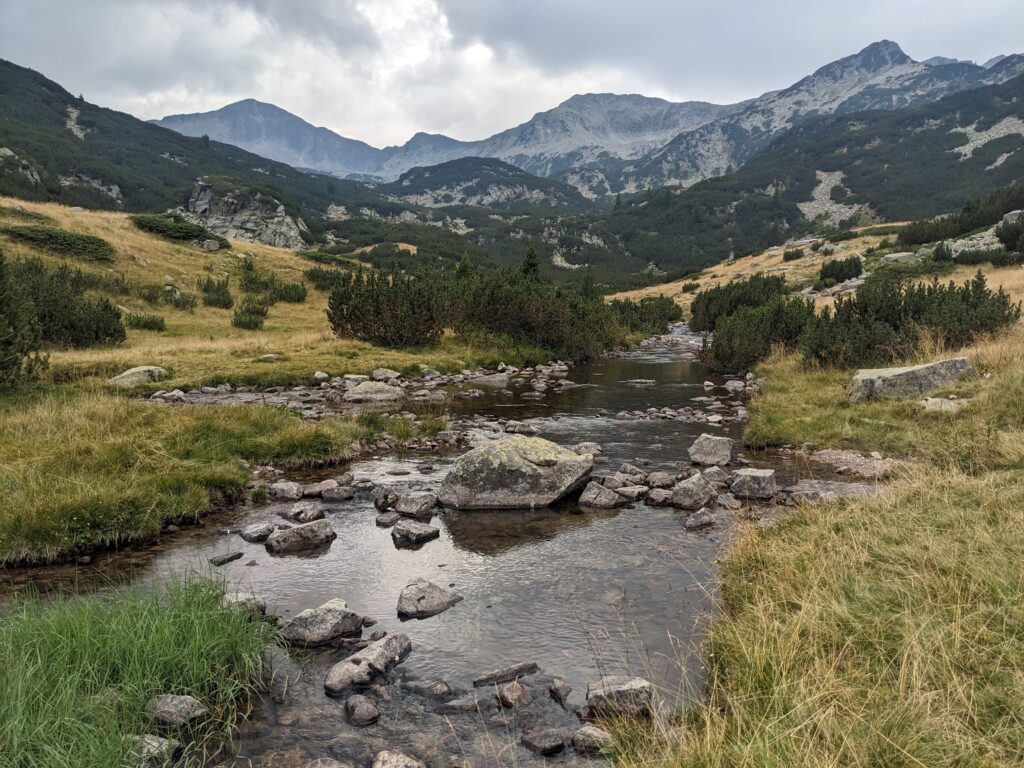
We started the day in a completely different fashion, visiting Bulgaria’s most renowned tourist attraction and one of their most important religious and cultural sites. Rila Monastery, tucked away deep in the Rila Mountains, is reputed to be the base from where Christianity branched out through the rest of Bulgaria way back in the ninth century.
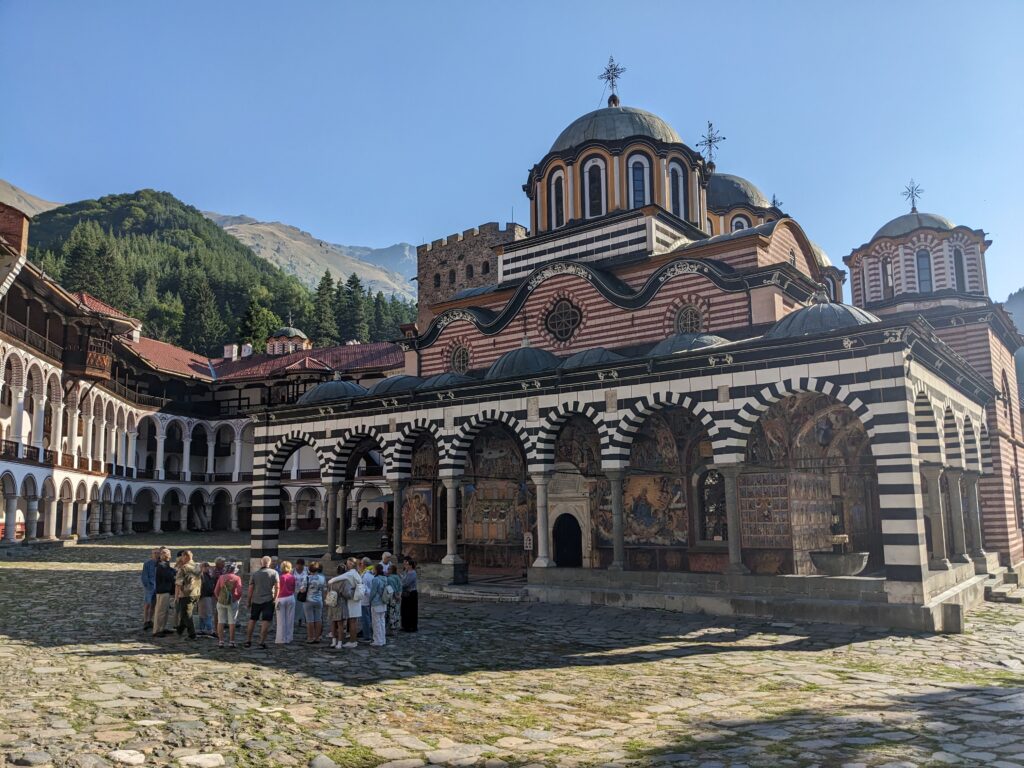
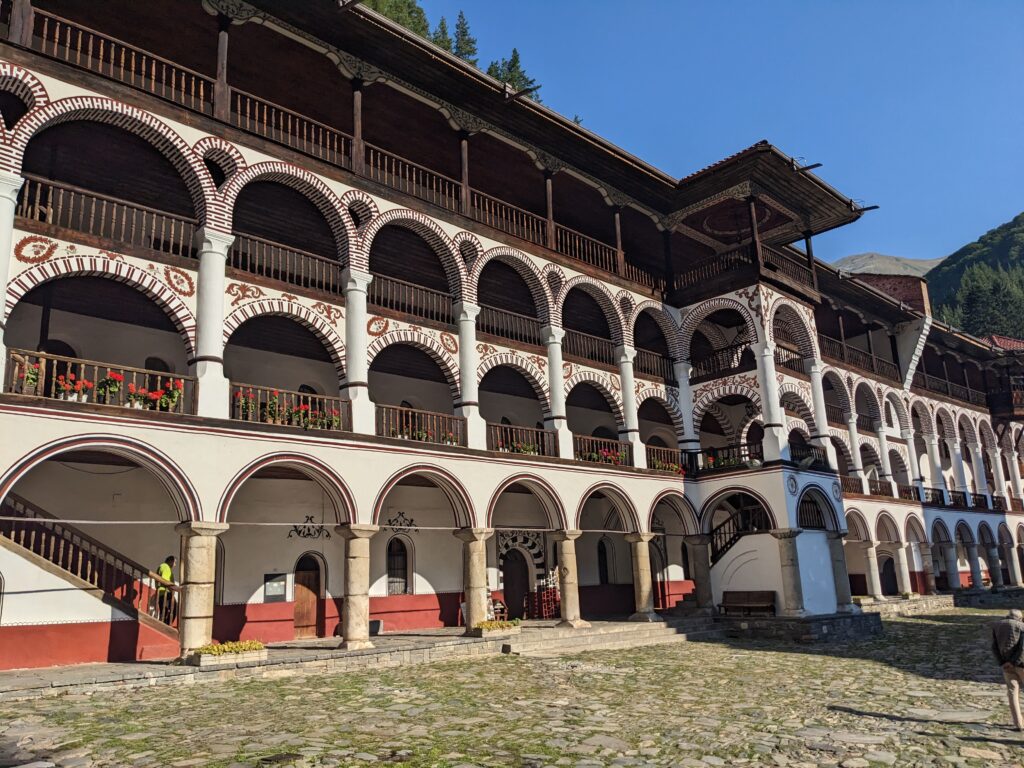
The oldest components of the monastery today date back to the 14th century with more recent additions in later years. Whatever the age the complex is a handsome and majestic set of buildings, especially the ancient church with it’s extensive religious frescos on every square inch of it’s interior.
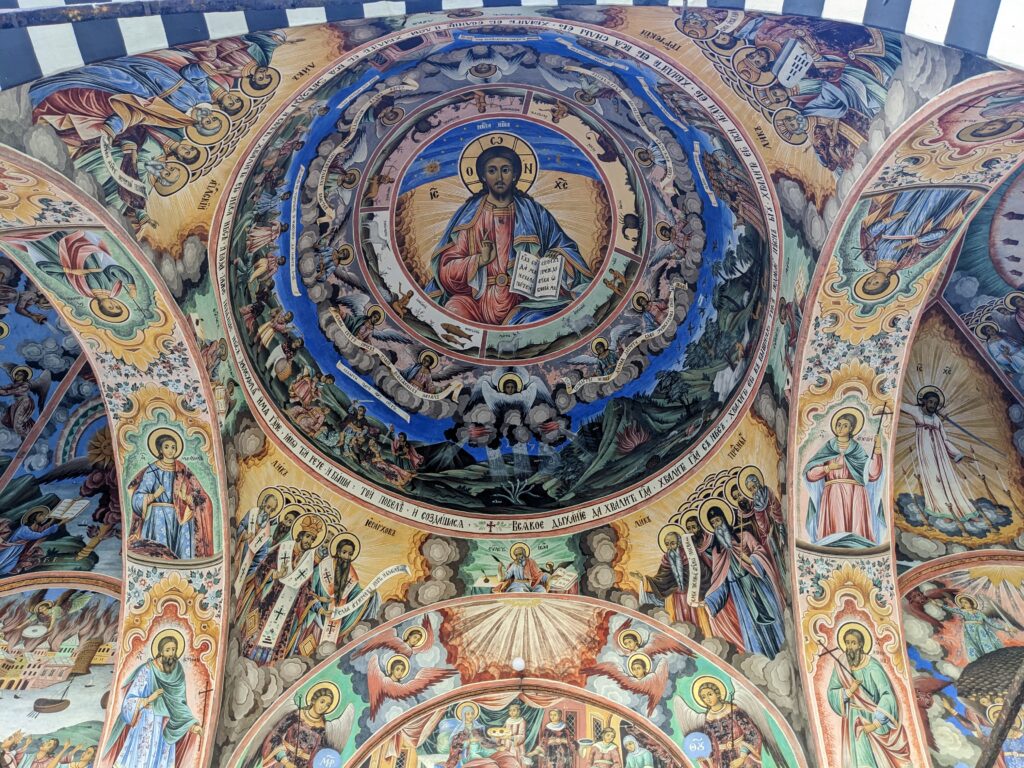
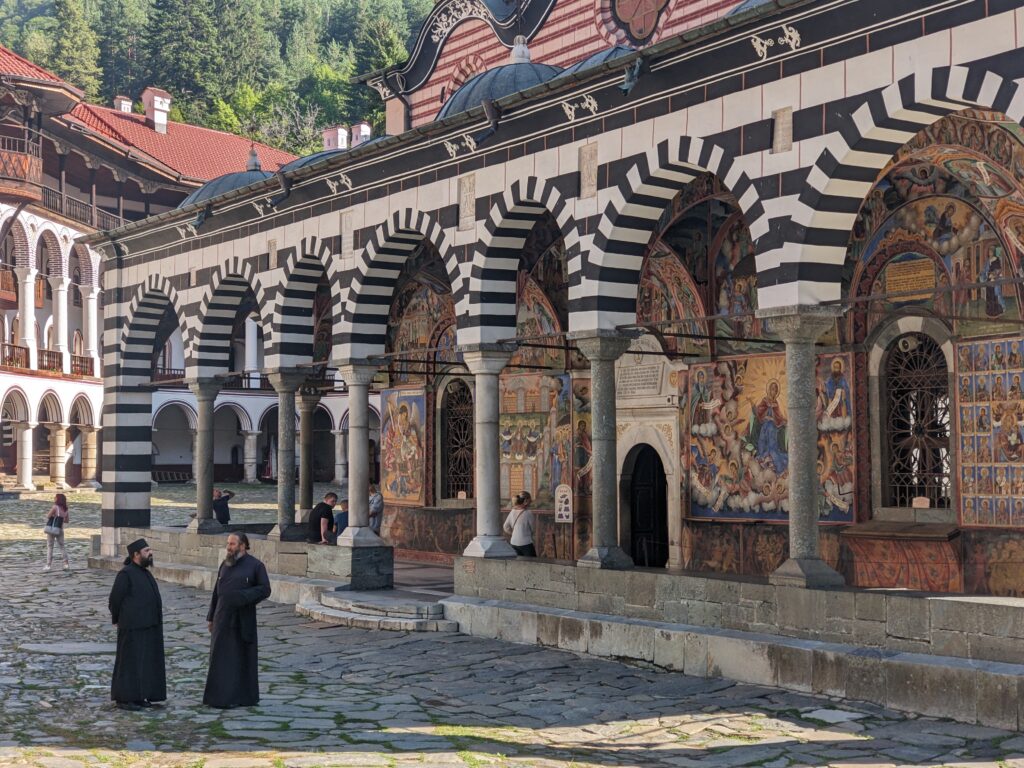
From the Rila Monastery we made our way to Pirin National Park and dined out on our walk amongst these magic mountains. The tall jagged skyline, the steep mountain walls, the pines, the lakes and mountain streams, it was all wonderful tonic for the soul. We camped that night at a halfway hut up the hill at around 1,850 metres (6,100 feet), the mountains looming all around us.
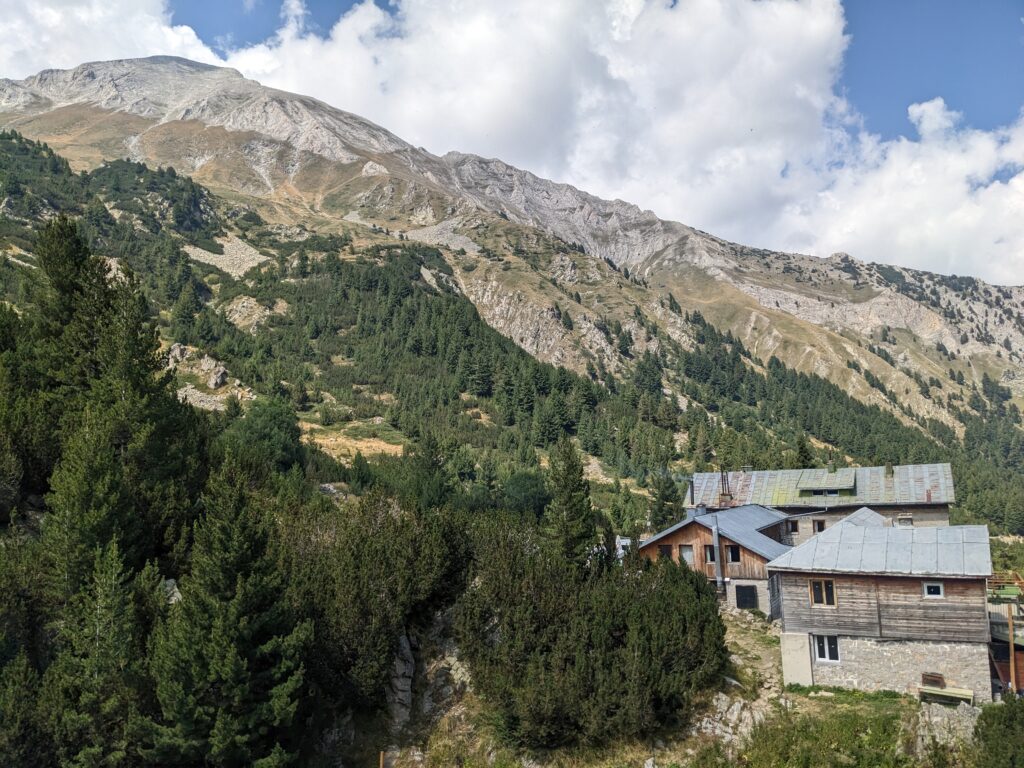
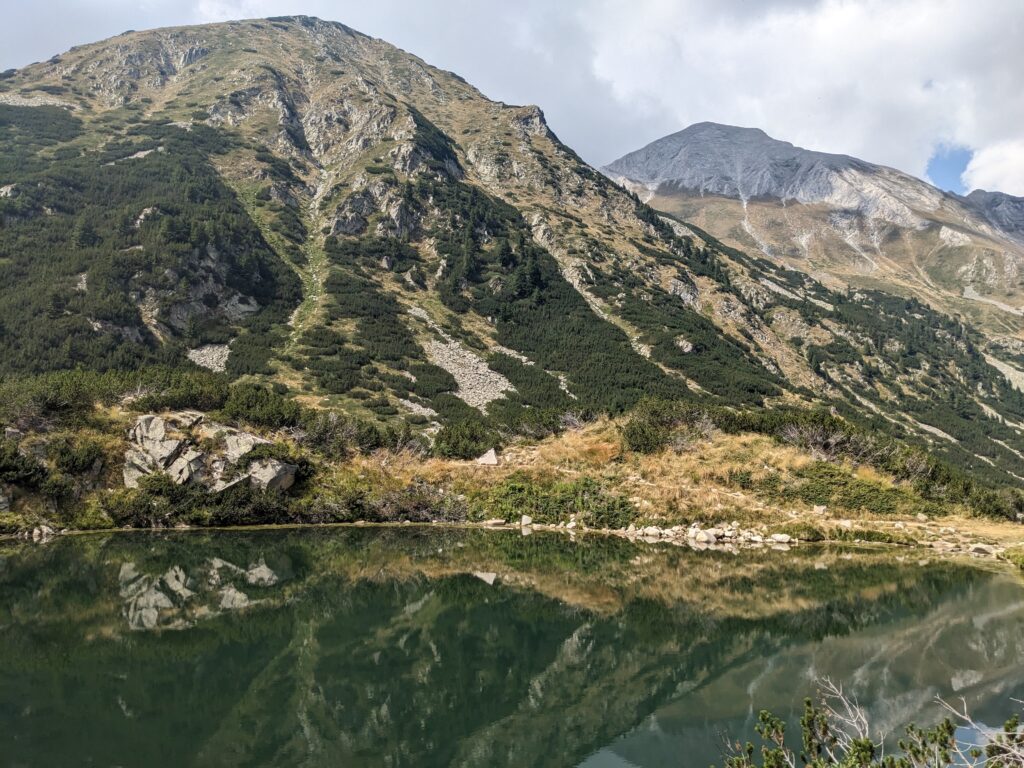
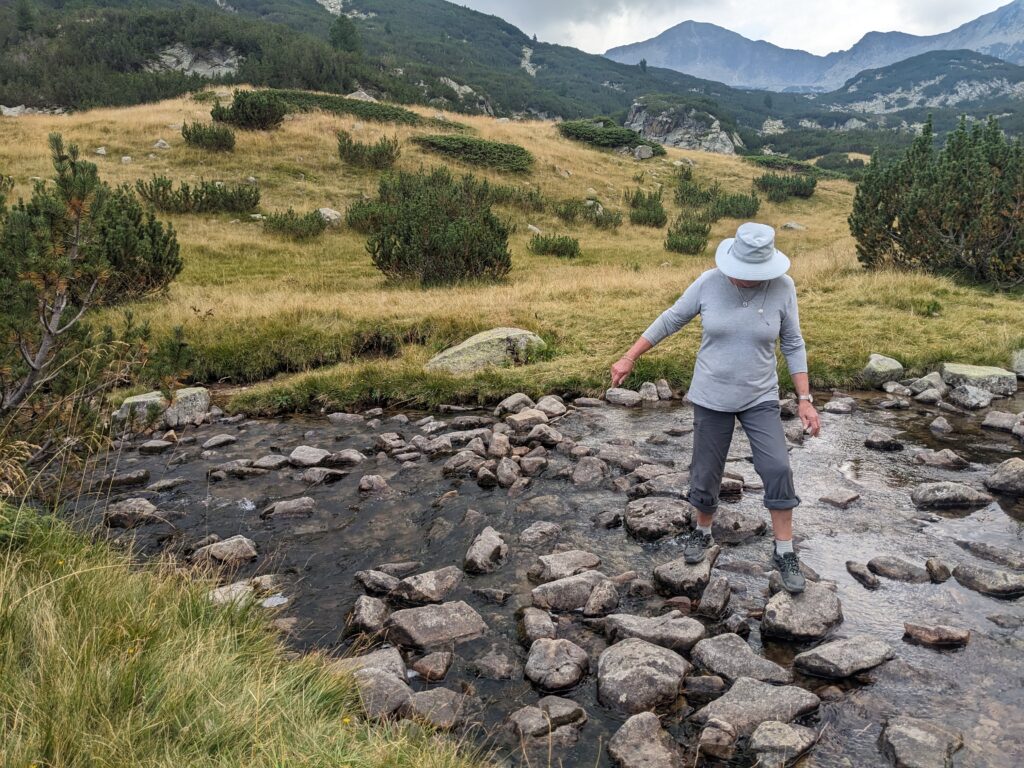
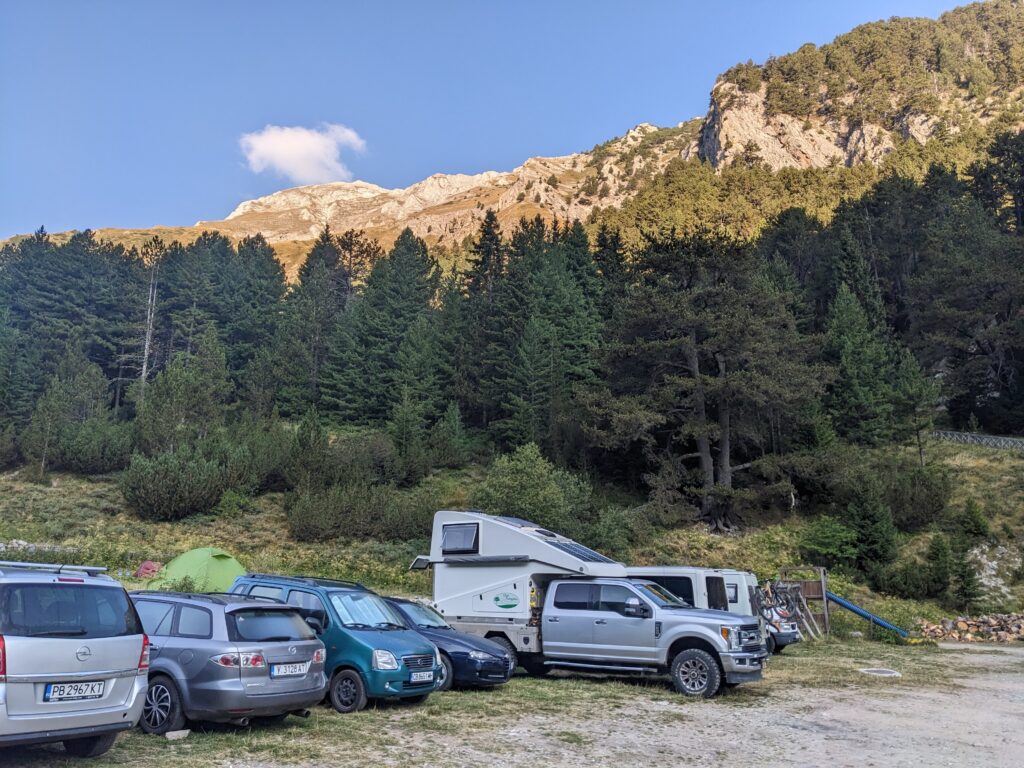
But wait, there’s more. In nearby Rila National Park there is the acclaimed 7 Lakes Walk which is reputed to be the best walk in Bulgaria. Well, we’ll be the judge of that. We drove to the park, up the winding switchback road through the pines to the carpark at the bottom of the chairlift and had our worst suspicious confirmed. It was a beautiful Saturday morning in August and what do you think we found? An incredibly long queue of Bulgarians all patiently waiting their turn to go up this slow two-seater chairlift to the hut at the top so they could begin the 7 Lakes Walk.
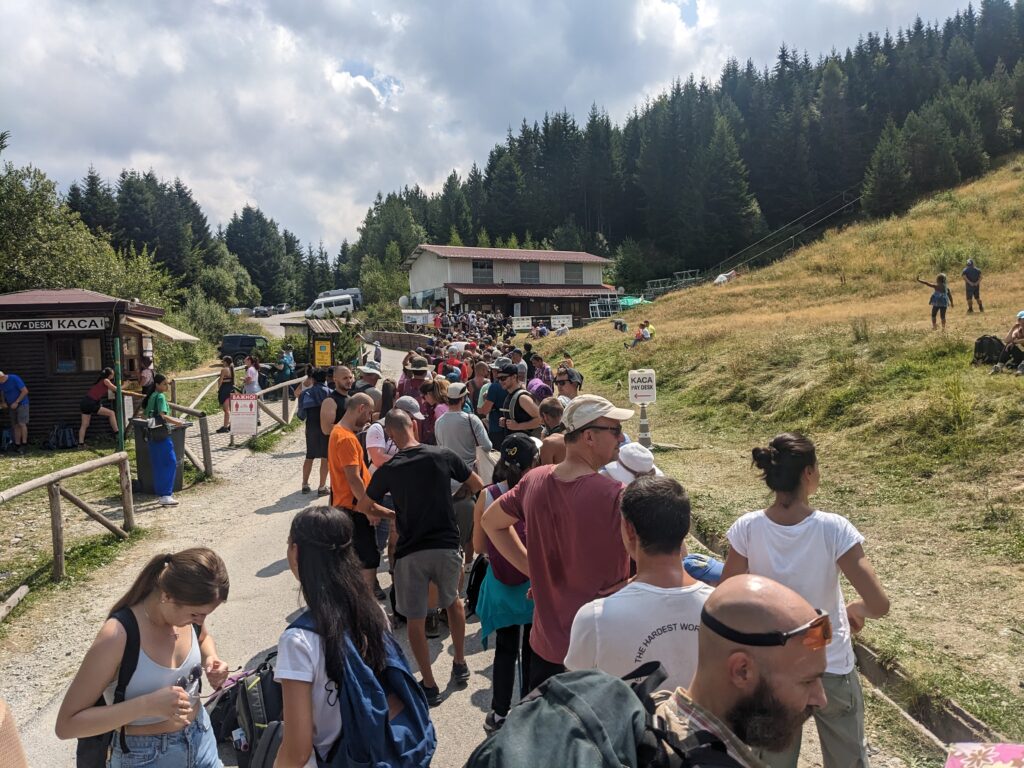
OMG, we stood in the serious heat for 70 minutes until we finally got our chance to load onto this ancient chairlift and enjoy the 20 minute ride up to the Rila Lakes Hut. But you can imagine the scene – a traffic jam of people crawling up the steep slope to begin this famed walk. It reminded us of that famous photo of climbers queuing on Mt. Everest except it was quite a bit warmer here.
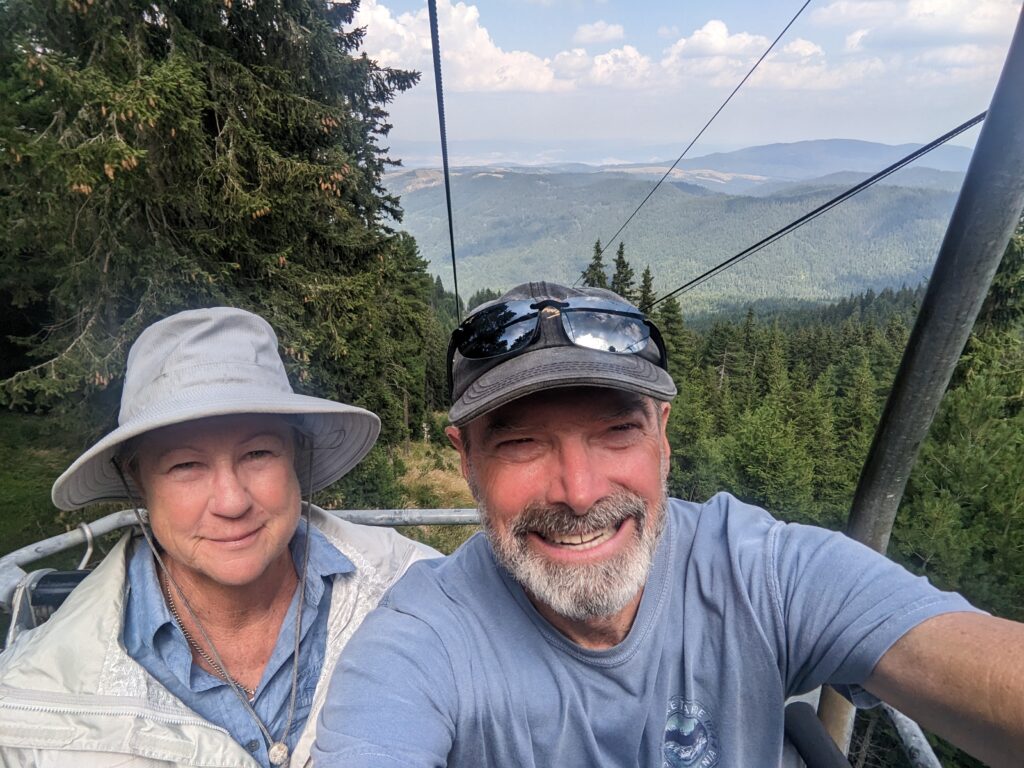
So we joined the congo line of people out enjoying their beautiful mountains before the summer winds down and we couldn’t blame them.
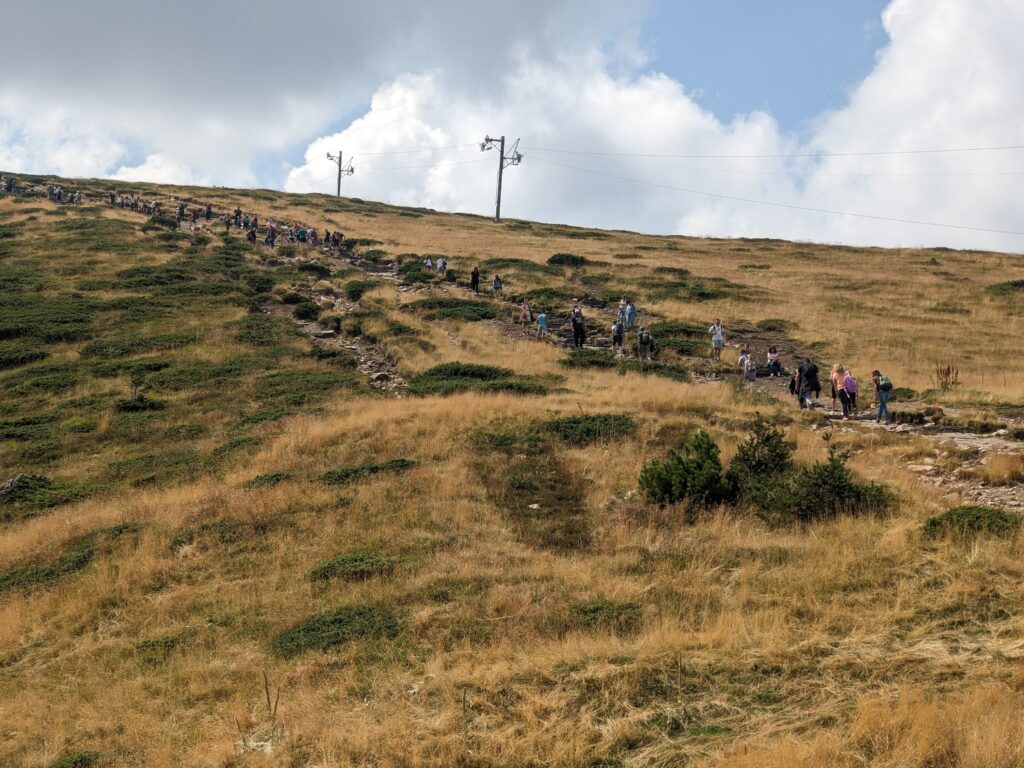
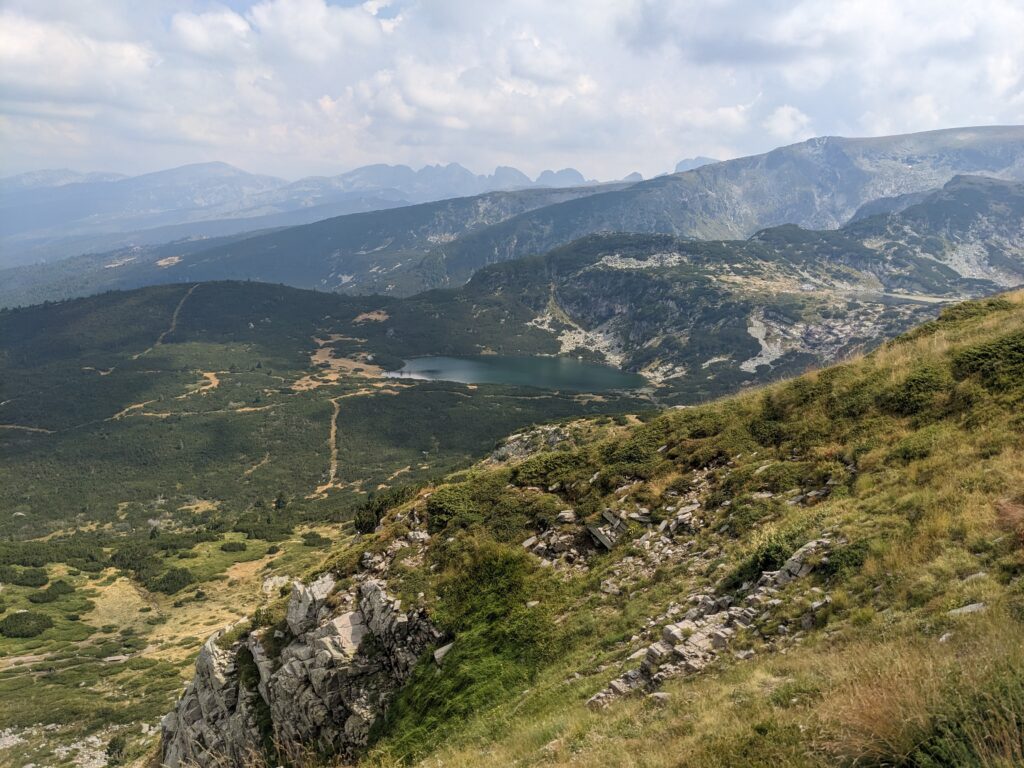
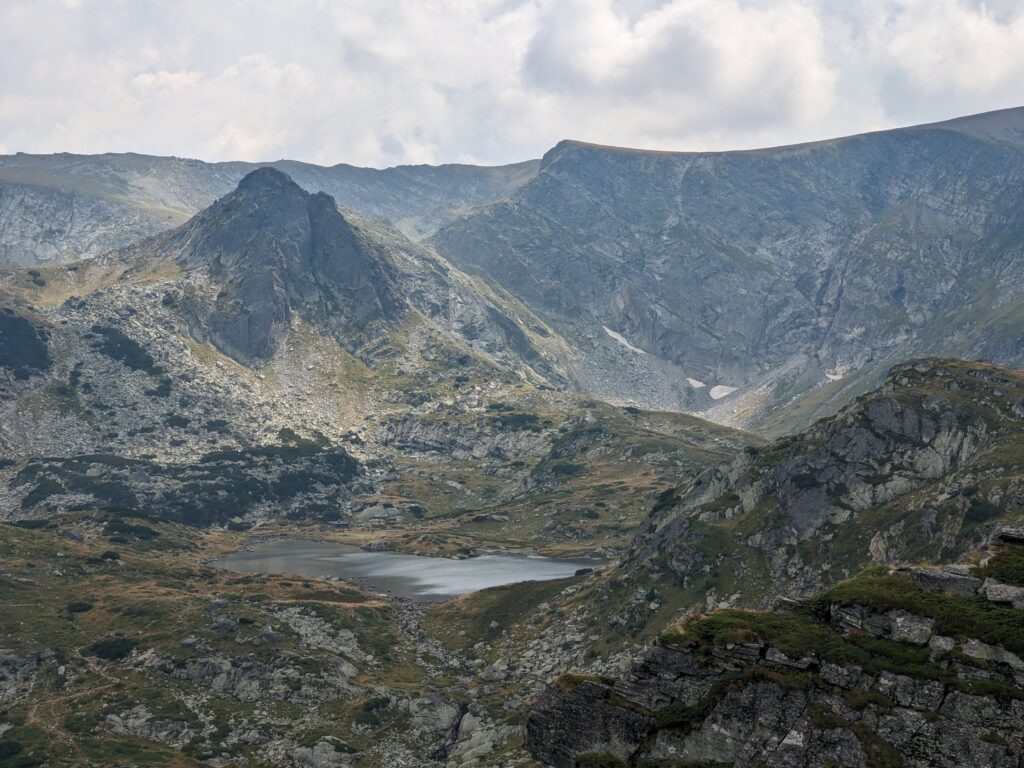
The views of the mountains around us were just spectacular and as we progressed in the walk one lake after another revealed itself. Over the three hour walk we peaked out at 2,365 metres (7,780 feet), higher than Australia’s highest peak, visited five of the seven lakes (the other two were on a vertical switchback sidetrack) and tried to ignore the extraordinary crowds that were all around us. So yes, stunning mountains and lakes but spoiled by all the people.
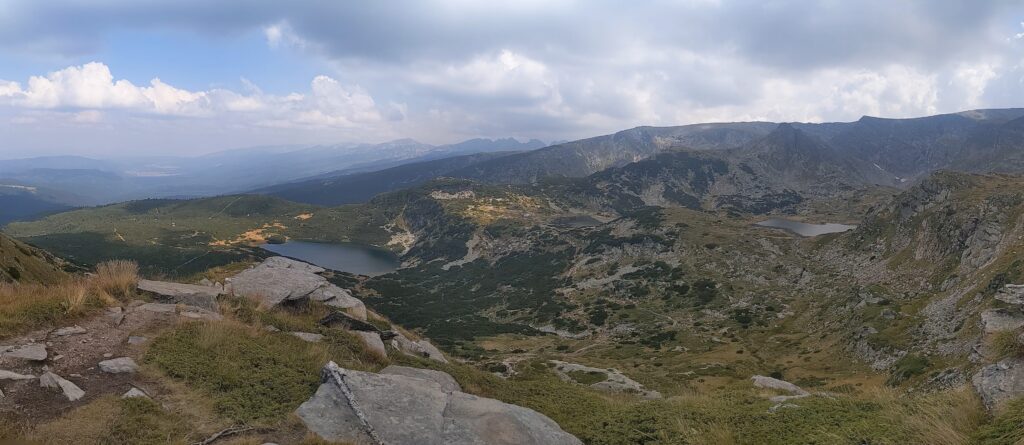
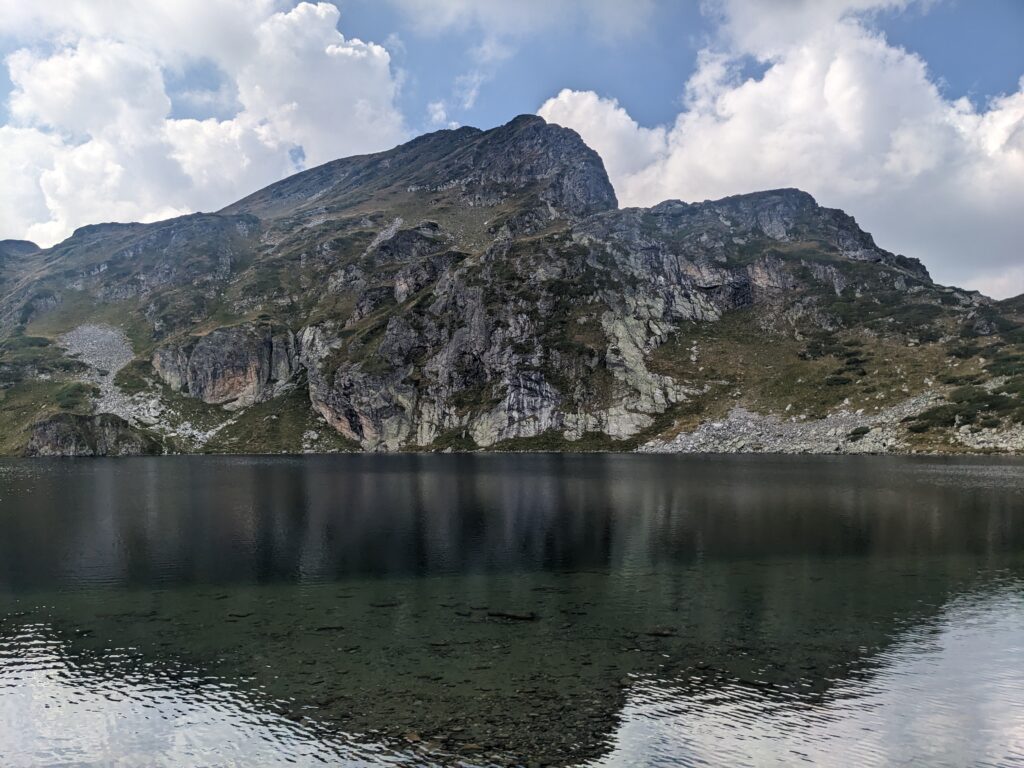
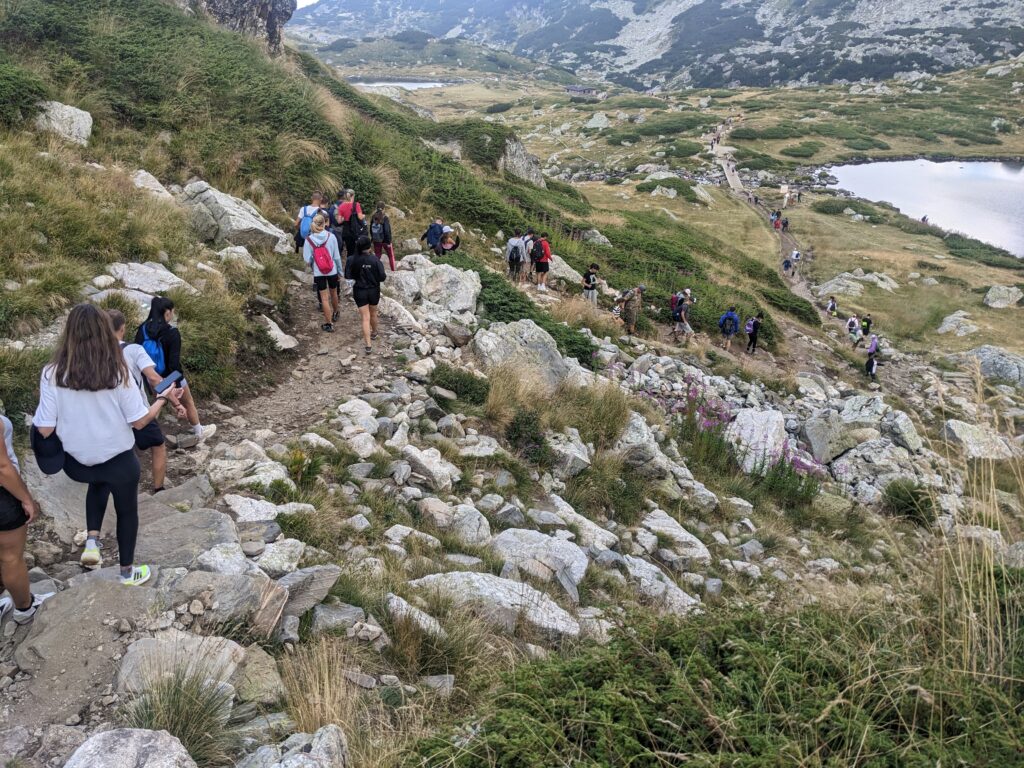
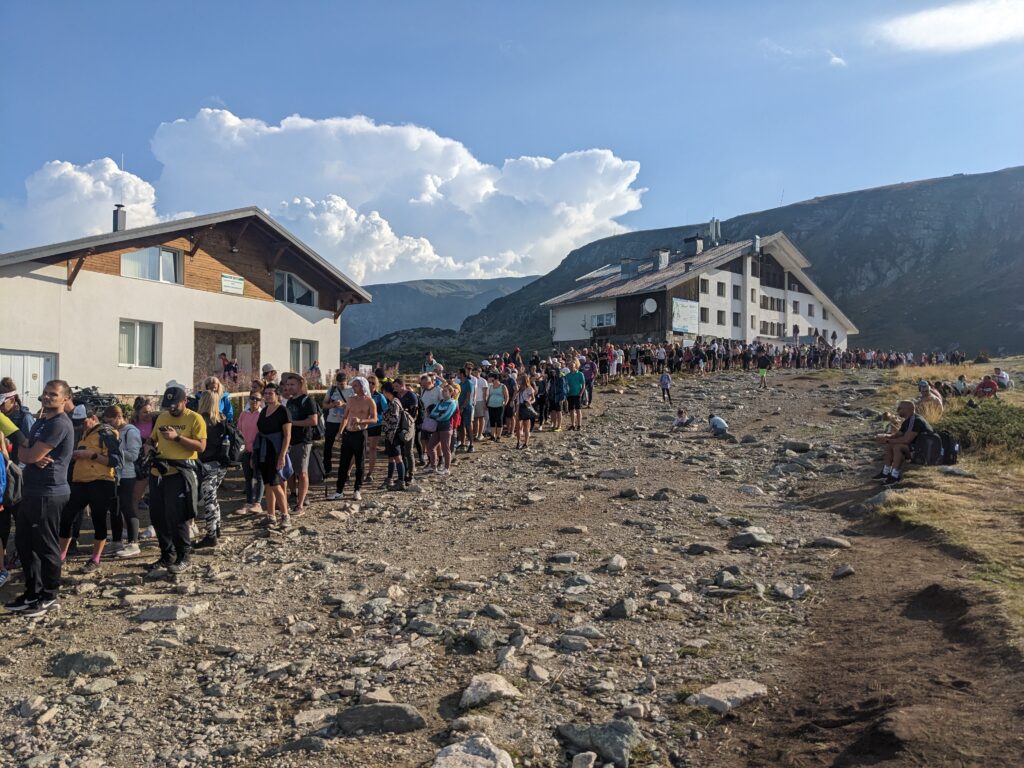
We camped that night in the nearby ski resort town of Panichishte, buggered by two consecutive days of walking in these mountains but also satisfied that we had gained a pretty good appreciation of this often overlooked European country. The next morning we drove to the border with Serbia and after two hours of tedium in the queue waiting for an exit stamp we finally passed into Serbia. That would be us and thousands of others, mainly Turks heading back to Europe after the school holidays and returning to where they work and live. Fun fact, Serbia is the 68th country we’ve visited on Follow the Sun.
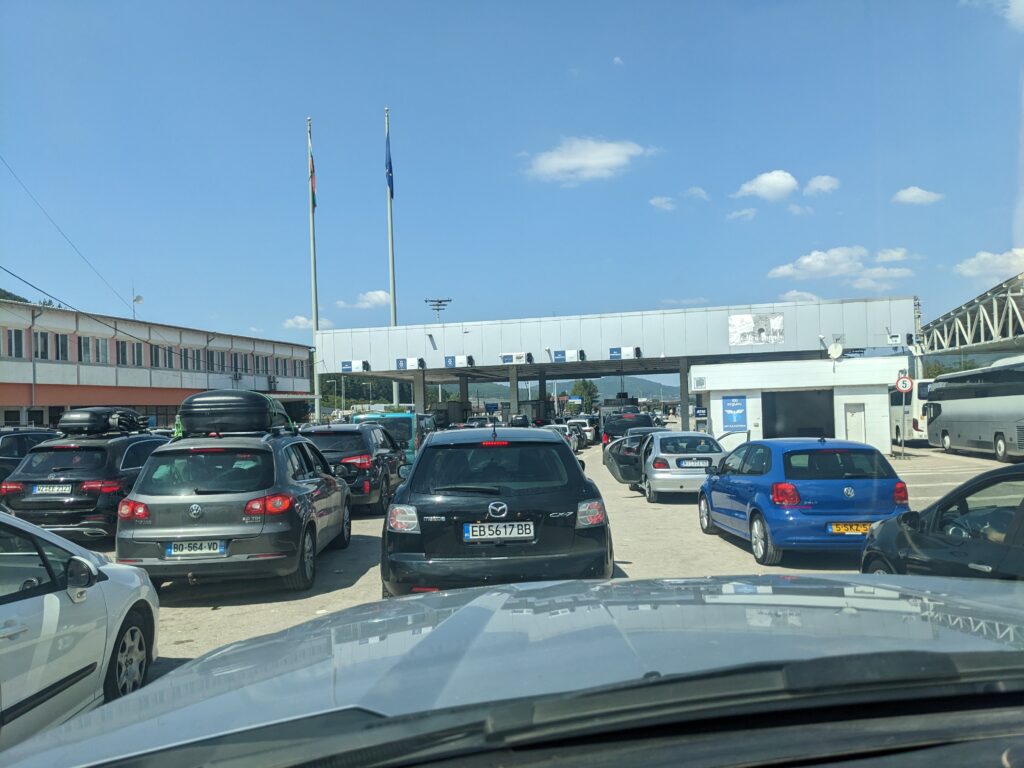
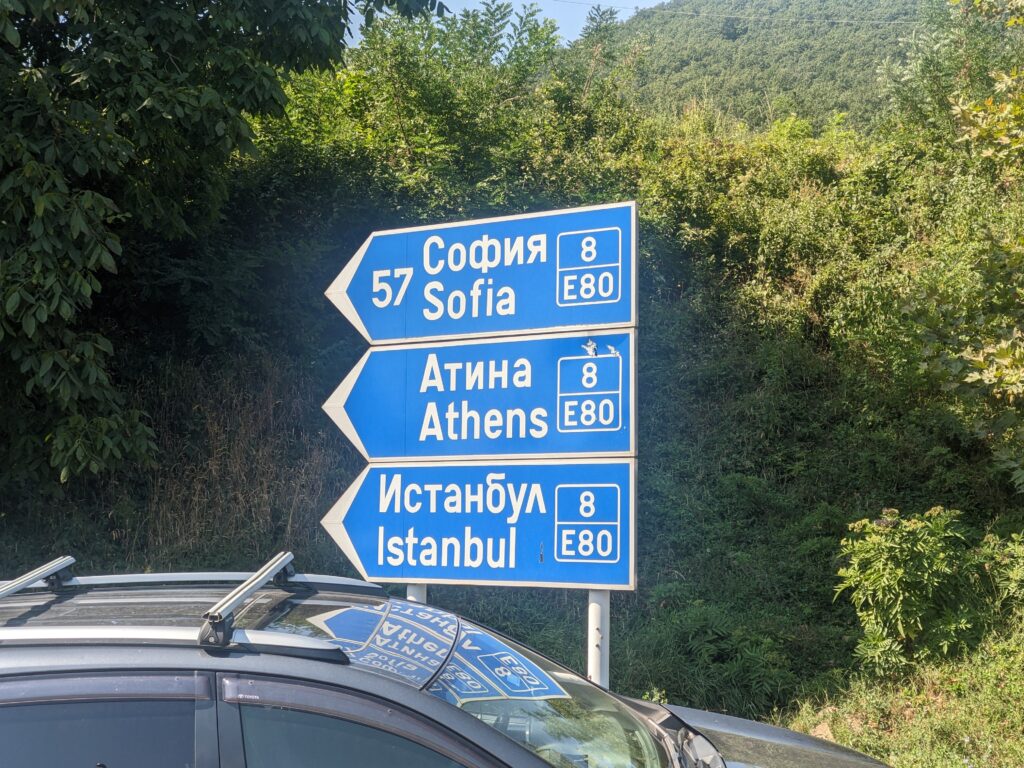
So, Serbia. What do we know about this West Balkan country, the former hub of the large regional country of Yugoslavia before it broke up in the 1990’s. From the 1980’s to the 2000’s Serbia earned a reputation for aggressive claims on much of the land around them, invasions, violence against civilians, war atrocities and much more. Serbia was even bombed by NATO to stop their aggression in Kosovo and there were numerous economic and pollical boycotts and bans on them. For a while there Serbia was definitely an outlier.
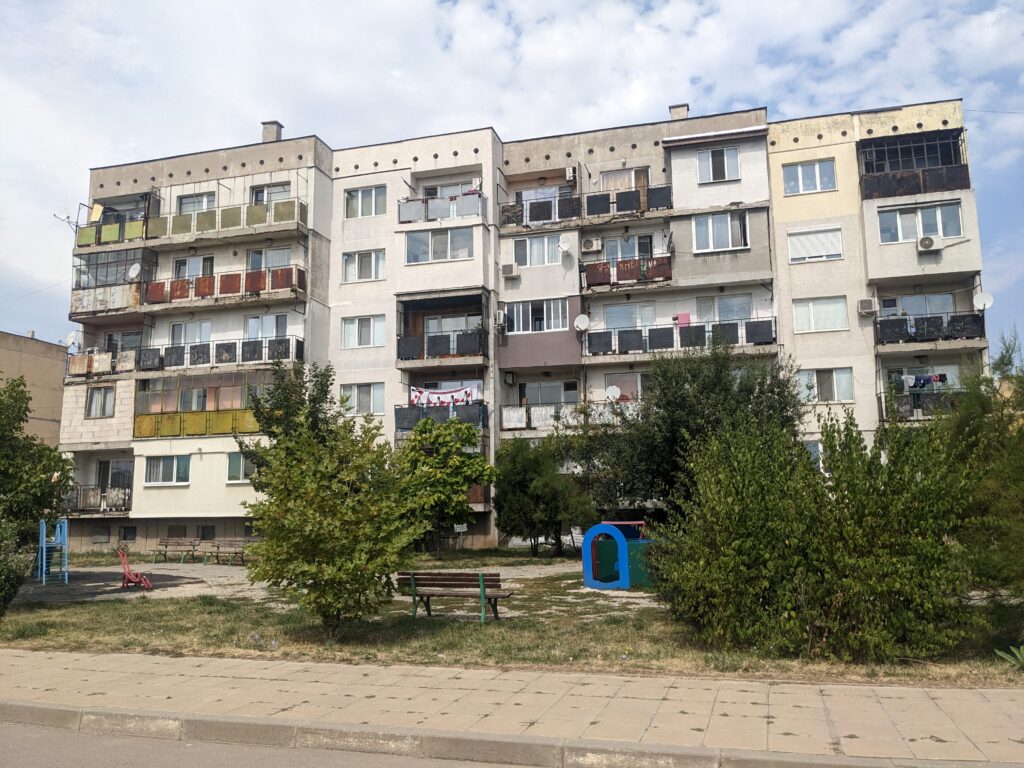
Today Serbia is still feeling the effects of those sanctions with high unemployment, high inflation and a high emigration rate. But with a few democratically elected governments and a goal of becoming a member of the EU Serbia is trying to work it’s way back into the mainstream. Their ongoing conflict with Kosovo, a breakaway country which has been independent since 2008, is still a major issue for all parties and the entire region. It’s not all smooth sailing for Serbia.
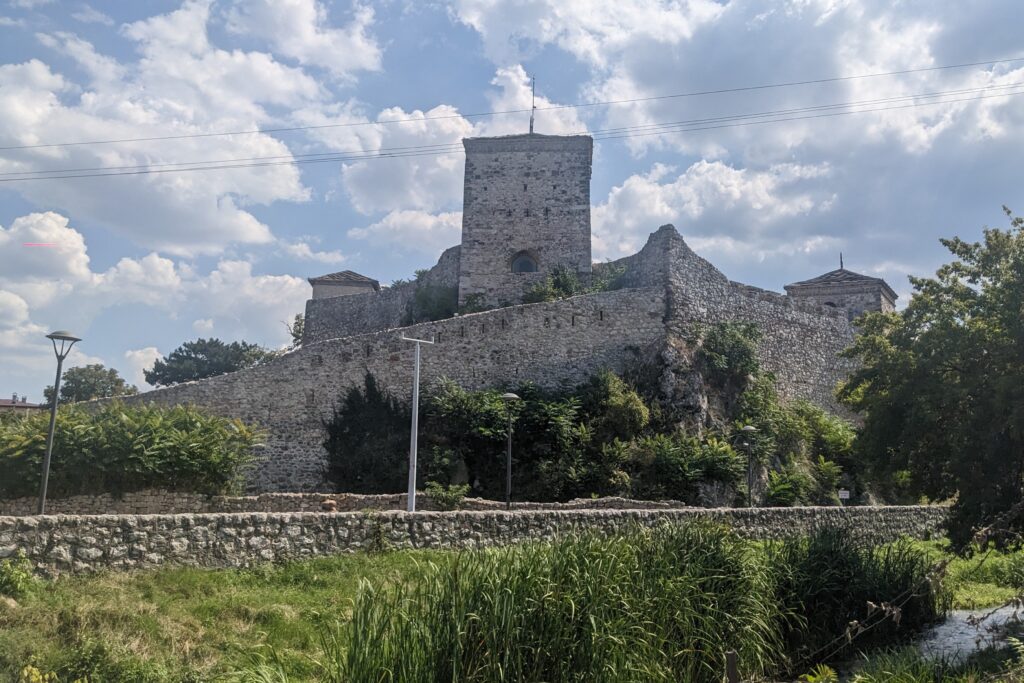
Staying with our recent theme of playing in the mountains, we stopped briefly at the southern hub of Pirot where we had lunch in the shade next to a river running through town. As we ate our lunch around 100 young men – or older boys – walked by, a bit unkempt but generally in good cheer, and we asked them where they were from. Afghanistan, they replied, and were another reminder of the huge refugee problem facing both people like these young guys and the countries trying to deal with them.
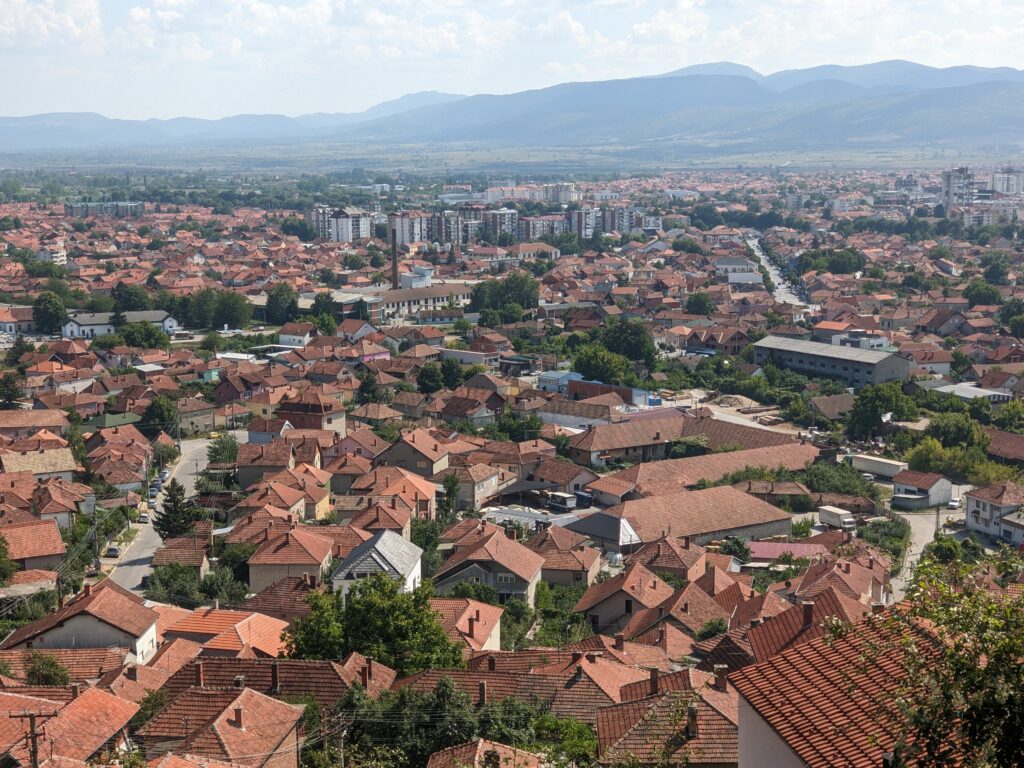
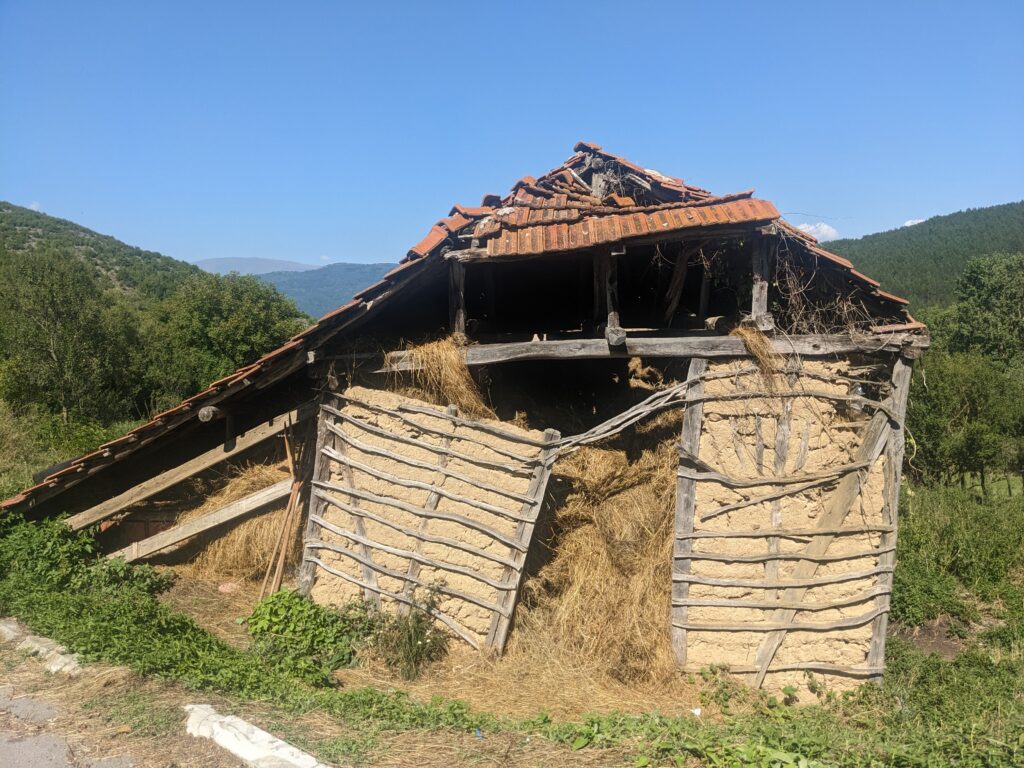
We headed up into the mountains above Pirot to Stara Planina National Park and it’s focal point, the very pretty 17 kilometre long Zavojsko Jezero Dam and lake. After exploring the coastline for a while we settled into a beaut spot on the banks of the lake, a few Serbians enjoying their hot Sunday on the water nearby, the shade and a nice little breeze our best friend for a long and lazy afternoon. That night we had a fire as the three-quarter moon rose above us and we thought it couldn’t get much better.
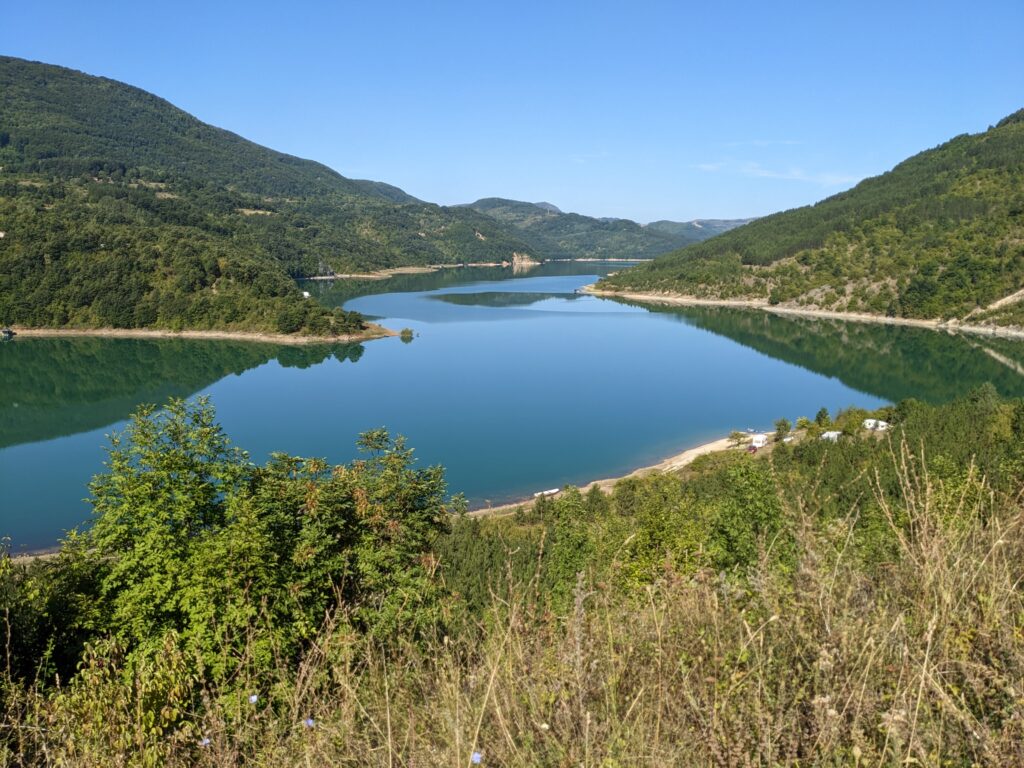
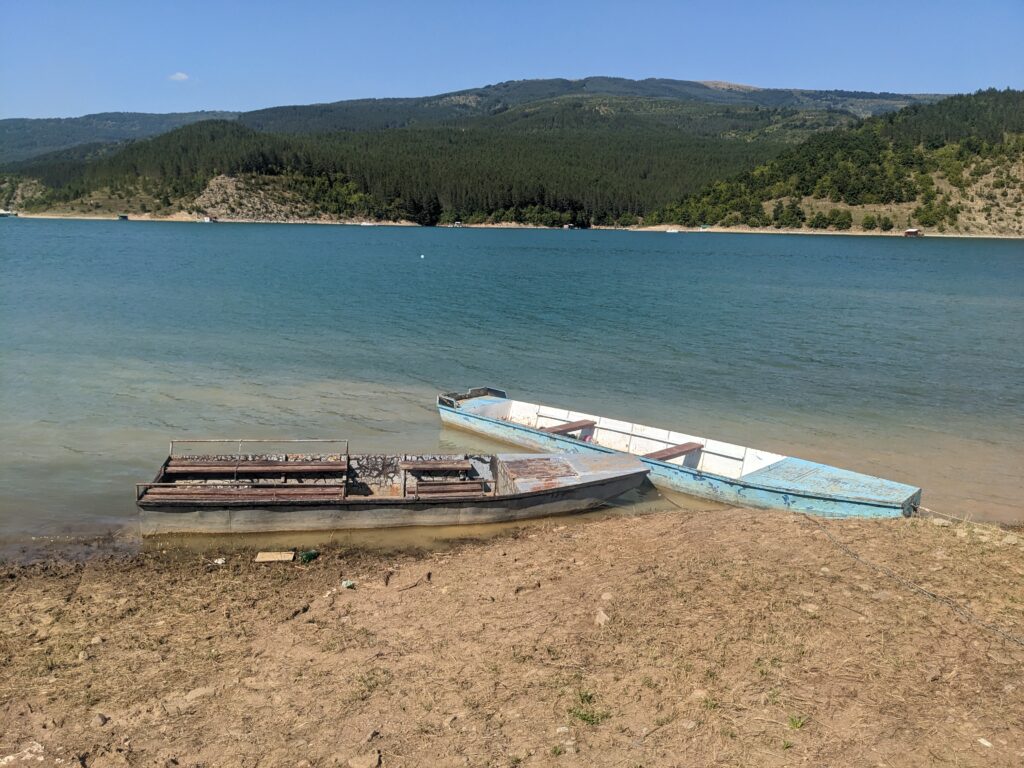
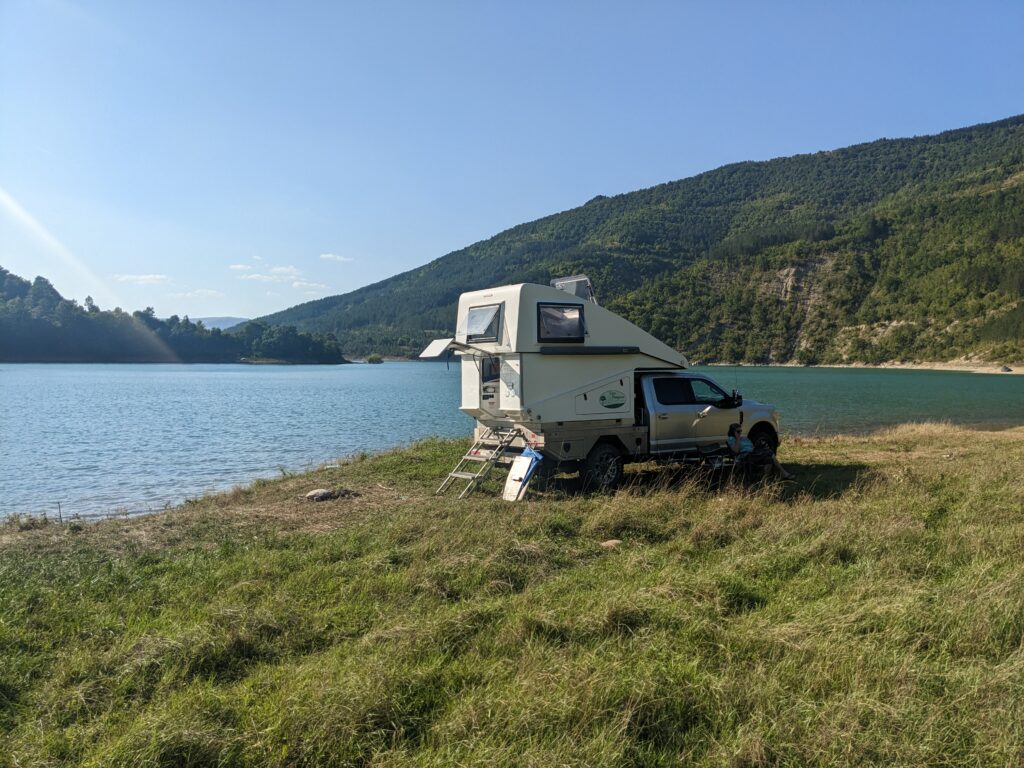
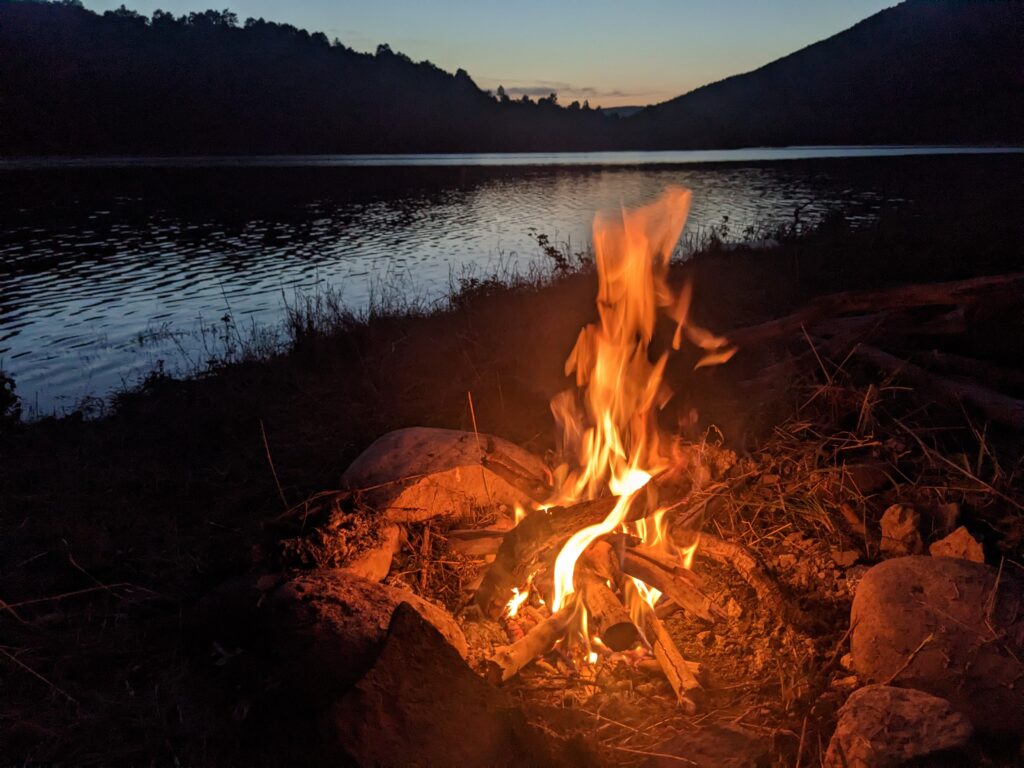
One of the major challenges in taking your own vehicle across borders, and there’s a few, is insurance. Without boring you in too many details, basically after we left North America Tramp has only been insured for third party liability – the vehicle itself has not been insured at all (of course we have travel insurance for ourselves). We use a German insurance company which has provided that third party insurance for most countries in the world but there are many which don’t recognise foreign insurance and we have to get our own at the border (Peru, Malawi, Turkey and Bulgaria come to mind).
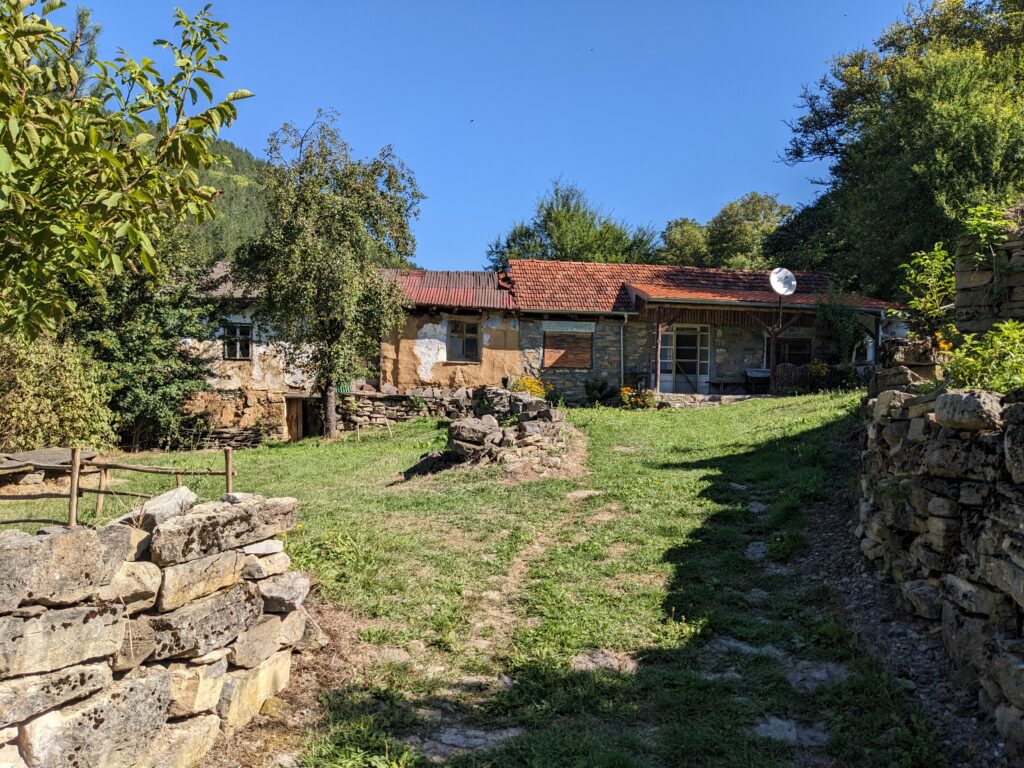
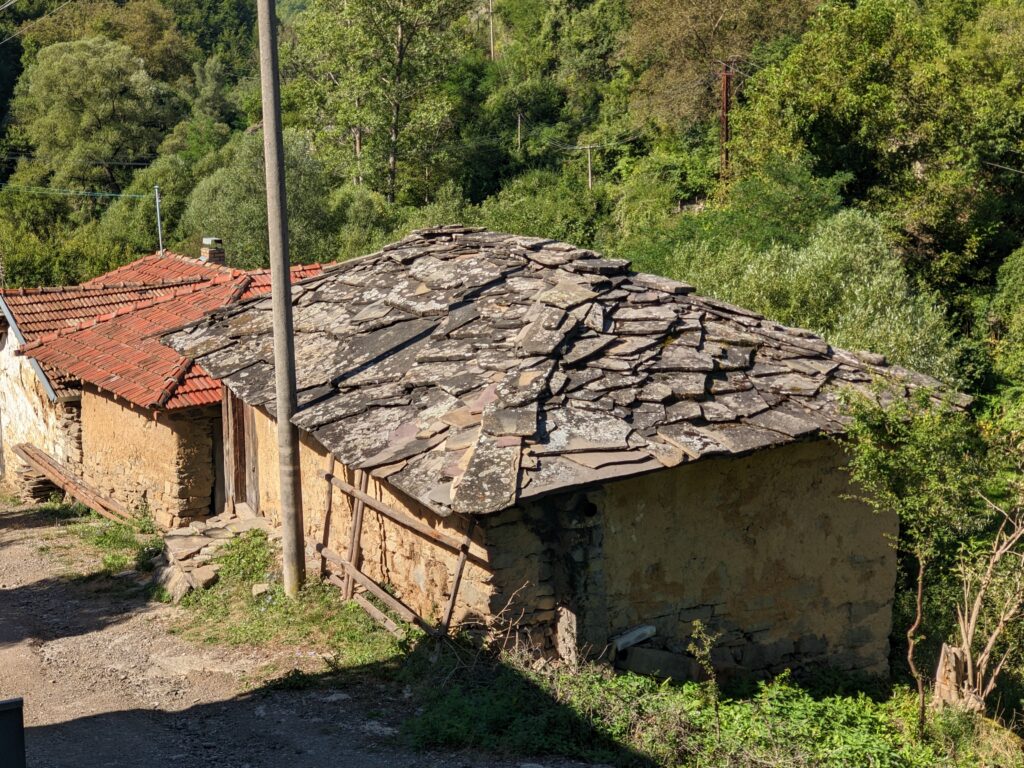
Most of the countries on this short list provide insurance at the border and make it mandatory to have before being allowed to go on. But not Serbia. Foreign insurance companies won’t cover us for Serbia and Serbia doesn’t have a mechanism to buy insurance locally – so basically we are uninsurable. We tried six different insurance companies in Pirot the next morning and only one would consider it – but for an enormous fee.
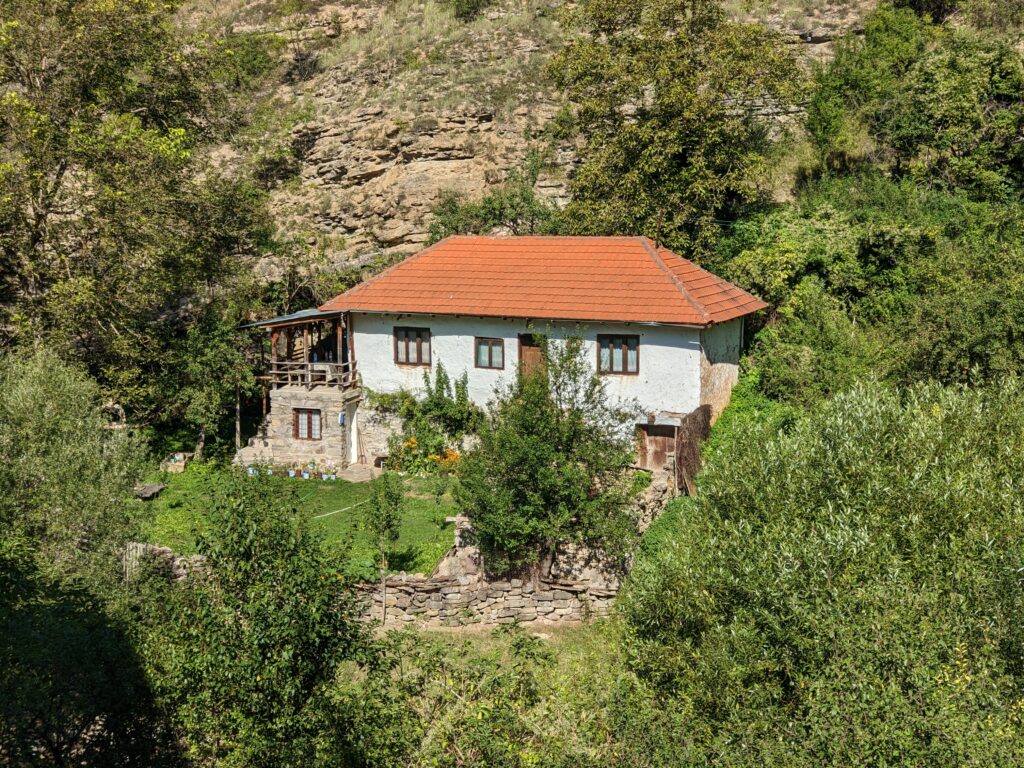
After more than two hours we still hadn’t secured the insurance and they were closing down for the day so we headed up another valley on the other side of town which featured deep canyon walls and camped next to a cute little babbling brook with hopes of getting the insurance the next day. But as we’re learning in Serbia, there’s no guarantee.
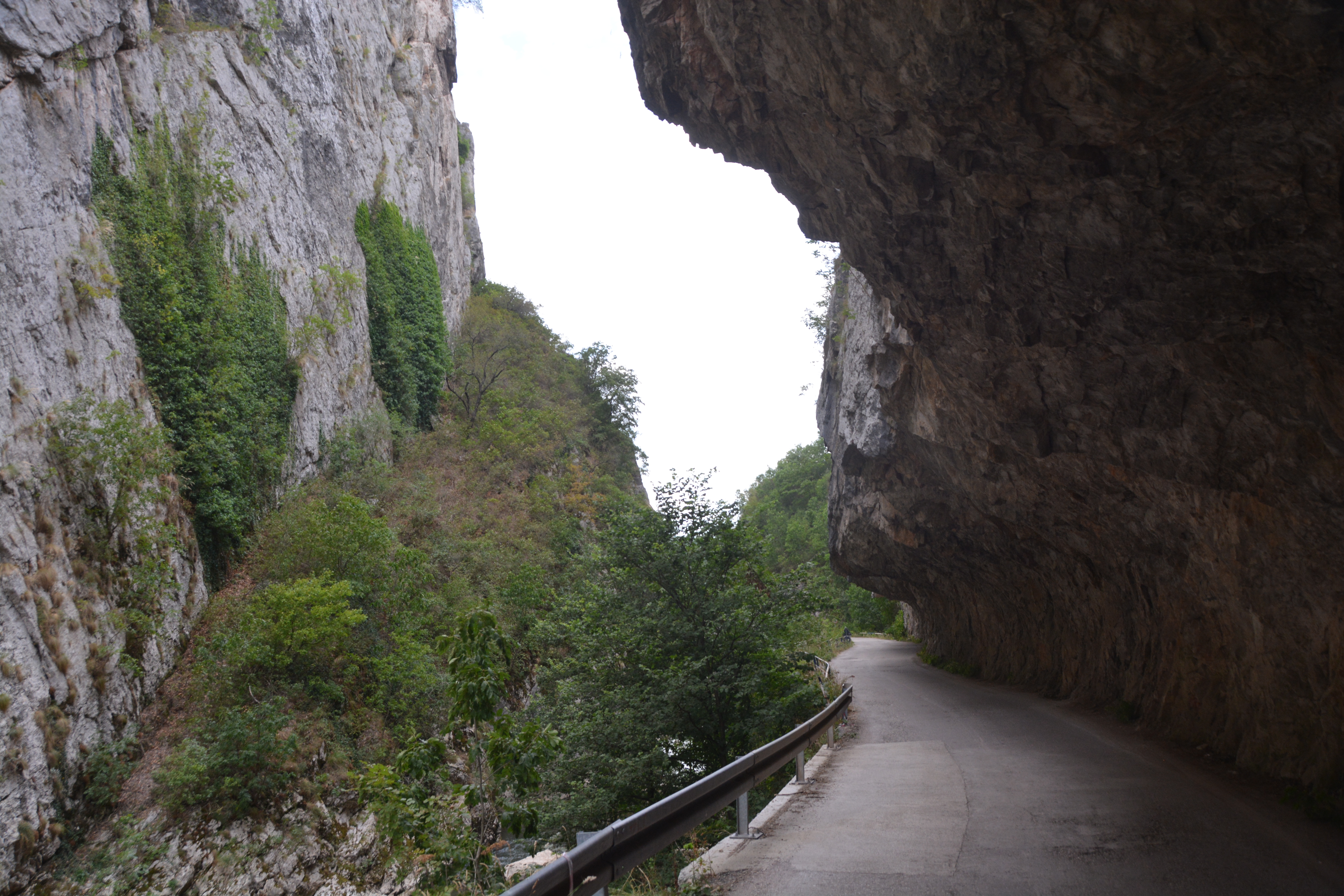
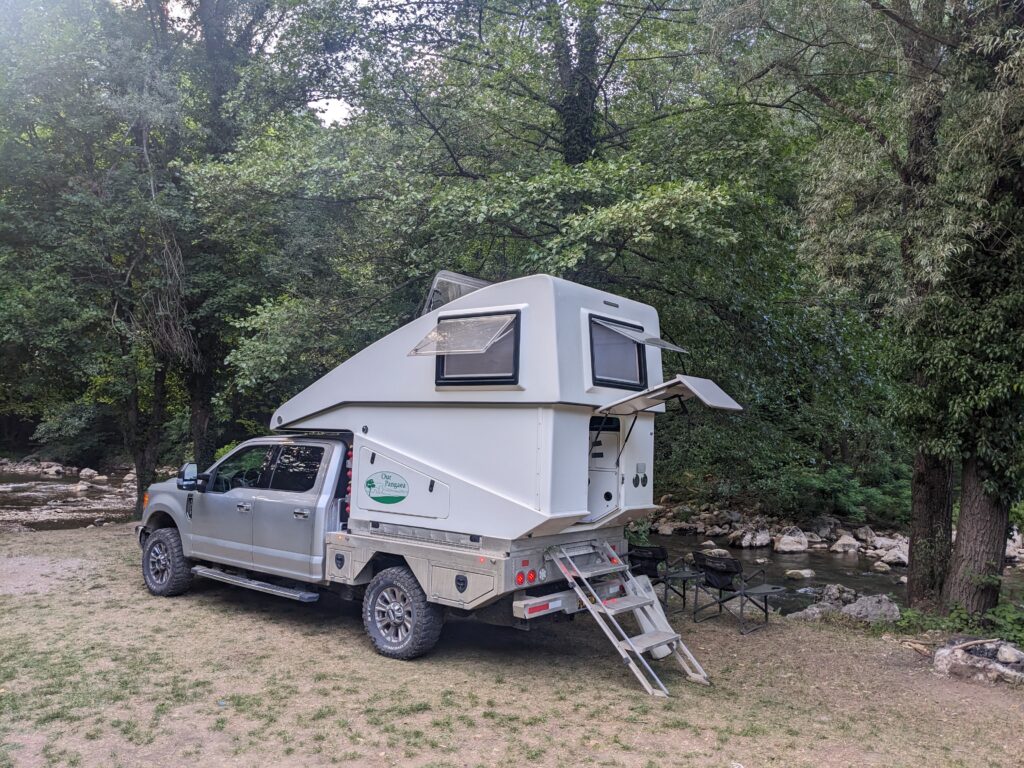
And so it came to pass. The next morning we got a call from the insurance guy who quoted us €385 (about A$650 or US$420) for Tramp’s third party insurance. Clearly they didn’t want to do it and clearly at that rate neither did we. Without insurance we couldn’t stay in Serbia so we dashed our plans for exploring this country and headed for the nearest border.
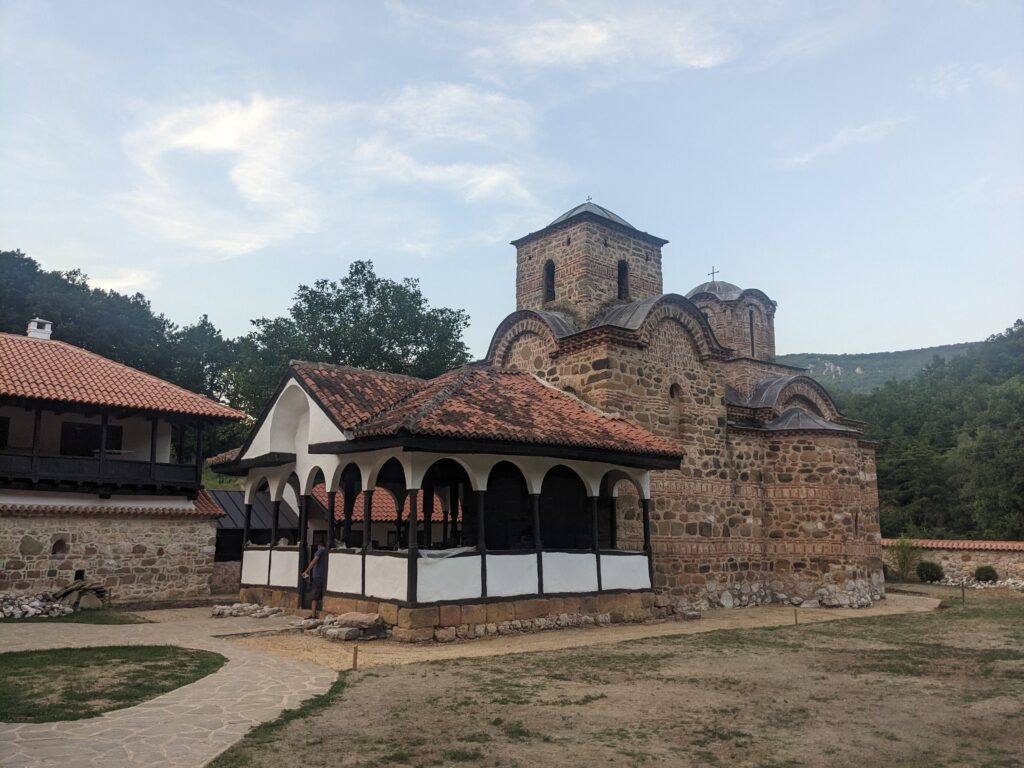

Comments
To the mountains — No Comments
HTML tags allowed in your comment: <a href="" title=""> <abbr title=""> <acronym title=""> <b> <blockquote cite=""> <cite> <code> <del datetime=""> <em> <i> <q cite=""> <s> <strike> <strong>